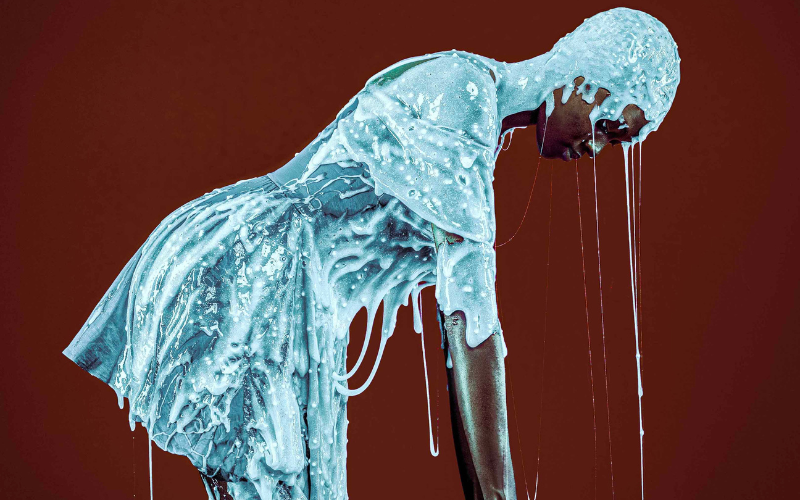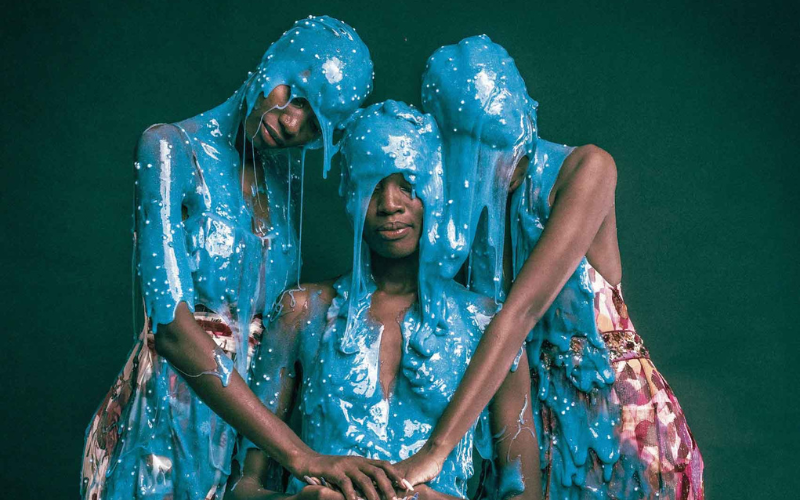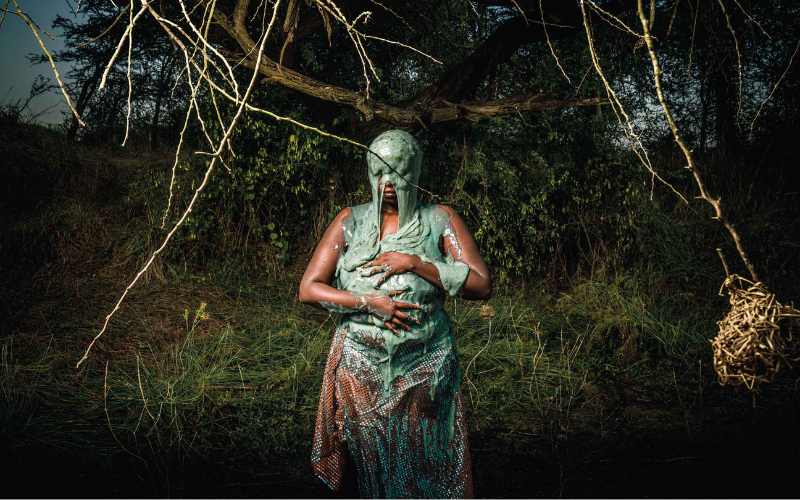Sherie Margaret Ngigi’s new photography series titled Someday We Overflow has its subjects dripping blue slime to explore themes of exhaustion, grief, tenderness, release, and transformation.
The slime represents an overflow of emotions that spill out when they can no longer be contained.
Sherie explains that slime becomes a stand-in for what people carry in silence until it pours out, sometimes uncontrollably.
The fine art photographer begins her creative process by thinking about the emotion she wants to capture: is it heaviness, release, suffocation, or freedom?
From there, she says, she imagines how the slime will behave: will it pour from the head, drip slowly, or cover the skin entirely?

“Before I reach for the camera, I make the slime, mix it, adjust its texture, and feel it shift between my hands. When I work with women, I keep the staging minimal so the body and the slime are the main language. The shoot itself is unpredictable, and slime doesn’t always follow the plan, but I’ve come to embrace that,” she says.
In making the slime, Sherie chooses its colour and density to shape the final work: a thicker slime feels heavier and suffocating, while a lighter one flows more gently like a surrender.
She likens its use to easing sensory discomfort as a therapeutic experience for her when she makes it.
In the process, she begins her own healing and emotional release long before it even touches the body or she takes the picture.

Photography is mainly seen as a ‘clean’ medium, and choosing a messy, tactile material like slime was her way of breaking away from the idea of photography as polished and perfectly composed.
She has learnt to view the unpredictability of slime as part of her artistic vision.
“Slime introduces chaos, texture, and unpredictability; it forces both me and the subject to surrender control. The chaos feels true to the emotions I’m working with, mirroring the messiness of being human,” she says.
Sherie sees slime as a second skin or even as an overflow of her subjects’ interior.’
When it pours from the head and covers the face, she adds that it feels like something internal leaving the body and taking shape outside of it.

She wants viewers to feel unsettled and moved, and to confront emotions that are sticky, heavy, or overwhelming, and to give themselves permission to spill over.
For her, slime is the language of emotions that refuse to stay hidden.
It symbolises the weight of carrying too much inside, the unspoken feelings that eventually pour out.
“Artistically, it becomes a material representation of vulnerability, mess, and release of all the things we are taught to control but which shape us the most,” she expresses.
What first drew Sherie to slime as a medium was its raw, delicate, fluid, and sticky quality, which was also a childhood play material.
“Playfulness and disgust are both deeply tied to vulnerability. When we play, we let go, and when we feel disgust, it exposes our limits of comfort. I’m asking viewers to reconsider these reactions and to see beauty in what feels messy and depth in what feels trivial,” she says.


